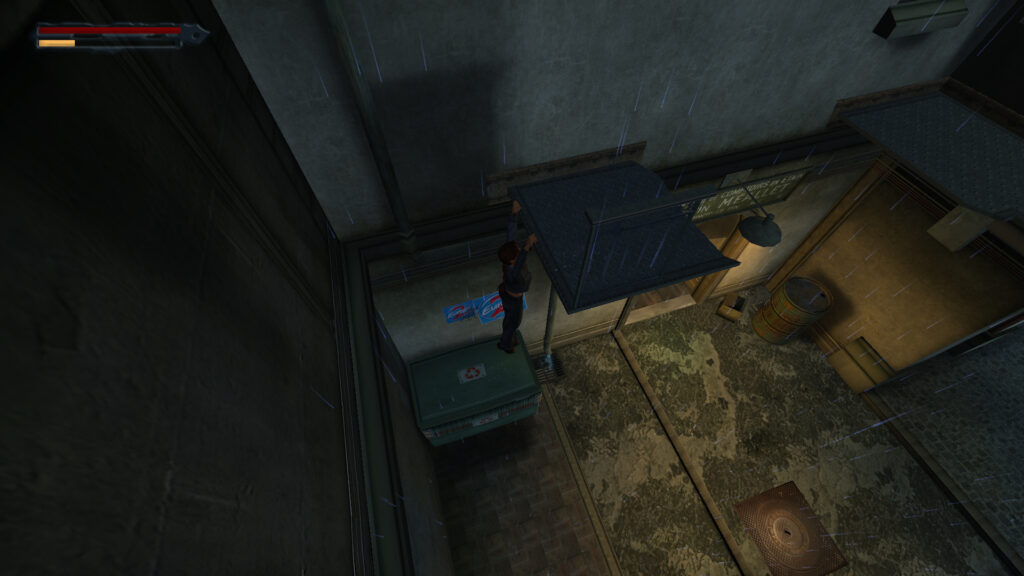If you liked Tomb Raider I-III Remastered, this follow-up includes those same enhancements plus a few smaller additions on top. There’s very little reason not to pick this one up if you enjoyed I-III. Though, it should be noted that this collection includes some of the most critically panned games in the series. How Aspyr and Saber handle the black sheep of the series piqued many fans’ curiosities. So, how does this remaster collection touch up Tomb Raider IV-VI?
Before going through the additions and impressions of each title individually, let’s first explore the general quality of life enhancements across all three games. First, the returning features. The classic tank controls are joined by a modern control scheme option, which can be toggled in the menu like before. My favorite remaster feature remains the wonderful ability to toggle classic and modern graphics on-the-fly. Like the previous collection, the modern visuals of VI-VI are wrapped in 4K resolution at a smooth 60 frames per second while classic visuals are locked to 30 FPS. Complementing the fresh visuals is the Photo Mode, which comes with some new settings and outfits this time around. Depth of field, zoom settings, and camera angle changes are added in addition to new outfits for Lara to pose in. Thankfully, these outfits can be worn during gameplay and not just in Photo Mode, unlike the initial release of Tomb Raider I-III Remastered.
“Brand new to IV-VI Remastered are boss health bars, which can be toggled on or off.”
My second favorite remaster feature is the ability to save anywhere with the press of a button. Brand new to IV-VI Remastered are boss health bars, which can be toggled on or off. And of course, putting a bow on the whole experience are the 168 achievements; a lower count than I-III Remaster, but still formidable to collect. Overall, this is a pretty good suite of enhancements and features. The new control scheme and improved framerates really ease a lot of the clunkiness inherent in titles like Tomb Raider VI.
Now on to the three games themselves. Tomb Raider IV: The Last Revelation opens with a flashback tutorial. A teenage Lara Croft joins her mentor Werner Von Croy through Angkor Wat in search of an artifact. After the tutorial, Lara spends a majority of her time exploring the tombs of Egypt. The plot of The Last Revelation is among the most significant in the classic series, tying together Tomb Raider V and VI with Lara and Von Croy’s uncertain fates. That said, the way the story is told is lacking in certain areas. Scene transitions aren’t properly explained and things just happen without exposition or on-screen guidance at times, but these are issues present through all of the games in this collection.
“Rather than hopping between distinct locales like some of the games do, The Last Revelation hones in on the mazelike intricacies of Egypt’s many tombs.”
The focused Egyptian setting of The Last Revelation is perhaps my favorite in the series. Rather than hopping between distinct locales like some of the games do, The Last Revelation hones in on the mazelike intricacies of Egypt’s many tombs. Some of the environments in Tomb Raider IV feel like being stuck in the best Zelda dungeons at times. The modern visuals do a good job filling in the details of the numerous hieroglyphs adorning the crypt walls that the original game left hazy. Lara goes outdoors a bit too, and the vastly improved draw distance of the modern graphics impress during these moments as you see stretches of desert dunes in the distance.
Tomb Raider IV’s control scheme is largely unchanged from previous games and mostly revolves around jumping around solving puzzles and navigating platforms. Player’s won’t find it difficult to jump into IV from the previous collection as this game is easily the most traditional of the three included in this collection.
Tomb Raider V: Chronicles takes a rather novel approach to storytelling. The entire game functions as a flashback to some of Lara’s most adventurous exploits not covered in previous games. Why is it framed through flashbacks? Well, Lara is presumed dead after the events of the previous game. Players wanting a bit of variety in locations and gameplay get that here, with four distinct sections covering different parts of Lara’s life. It’s also cool how each of the four sections is told from the perspective of one of Lara’s close confidants.

“The environmental design of the game’s Rome segment is evocative.”
I particularly enjoy the game’s opening Rome chapter, which forms the most traditional gameplay of the four locales. Controls are pretty much identical to previous games, but if you need a bit of practice, the optional backstage opera tutorial area does a great job easing you through the motions. The environmental design of the game’s Rome segment is evocative. Switching between classic and modern graphics is especially interesting within this level because the skybox is completely different between the two visual settings.
Some of the other locations, such as the underwater diving within the game’s second locale, are beset with some level guidance issues. Still, the variety of the four locales make up for the individual shortcomings. Searching for the Spear of Destiny through the ocean floor of a Russian naval submarine is tense and interesting, while the occult flavored Ireland adventure has Lara coming into contact with demonic forces. The final section through a NYC skyscraper involves some stealth-based gameplay and also sheds more light on Lara’s relationship with her mentor, Von Croy. There’s a lot of game packed into Chronicles, even if some of it is uneven in execution.
The next and final game in the collection is the black sheep of the Tomb Raider series. Having never touched Angel of Darkness before, I was pleasantly surprised with what I played of the remaster. First off though, something that may disappoint fans: the stamina meter is kept from the original. I fell off high scaffolding a number of times due to the stamina bar depleting mid-hang, and the remaster doesn’t attempt to remedy that. What it does remedy is the original’s terrible framerate and clunky controls as a result thereof. I personally like how walking near edges prevents you from falling, unlike previous entries. The streamlined directional climbing also feels smoother than other Tomb Raider games.

“The stamina meter is kept from the original Angel of Darkness release”
But yeah, everything else feels a tad bit slower and more rigid in Angel of Darkness. Opening drawers and picking up items has this slow animation tied to it making everything take longer. And then there’s the unskippable tutorial, with Lara narrating to herself how to play the game. Previous entries allowed players to move around during tutorials, but not this one; you must stay still while she talks. The ‘getting stronger’ gimmick is untouched from the original, and I kind of hate it. Lara can’t push heavy boxes or jump long distances if she doesn’t come across an unspecified requirement that makes her temporarily stronger. The requirement is typically just entering a side room or unlocking a door. It’s also just easy to miss the progression flag where Lara gets stronger, making her completely unable to progress in instances like the poison gas apartment near the beginning of the game.
But if there’s one thing Angel of Darkness was lauded for, it’s tone. The story is as dark and intriguing as it gets in the series. Lara is suspected of murdering her old mentor and must sneak her way through Paris to avoid getting caught. The music and art direction have a suspenseful feel to them that suits the story really well. Speaking of art direction, this is where the difference between modern and classic visuals is blurred the most. At times I prefer the original graphics for the increased foliage, but there’s no denying the added detail to signage with the modern visuals. The remaster adds a couple of restored content omitted from the original game including new weapons for Kurtis and an item vendor by the name of Rennes’ Pawnshop too, making this the definitive version of the game by a longshot.

“Tomb Raider IV is the most welcoming game out of the trio here, but there’s still something to love with each of them.”
As a package, IV-VI Remastered does what I-III achieves and then adds some little additions on top. I found various aspects of V and VI tedious, and the remaster doesn’t really erase those inherent flaws. Even with the modern control scheme, there’s some element of movement jank involved, especially with VI’s sluggish animations. There’s also instances of poor guidance and level flow in all three games; times when you’re left to solve puzzles with nary a clue or indication to help. Tomb Raider IV is the most welcoming game out of the trio here, but there’s still something to love with each of them. These are some of the most unique games in the franchise, featuring a wider variety of locales than before, so if you’re in the mood for something other than just tombs, this collection will satisfy. Tomb Raider IV-VI Remastered offers a ton of game for your buck, and at the attractive price point, comes highly recommended for fans and newcomers alike.
This game was reviewed on the PC.














